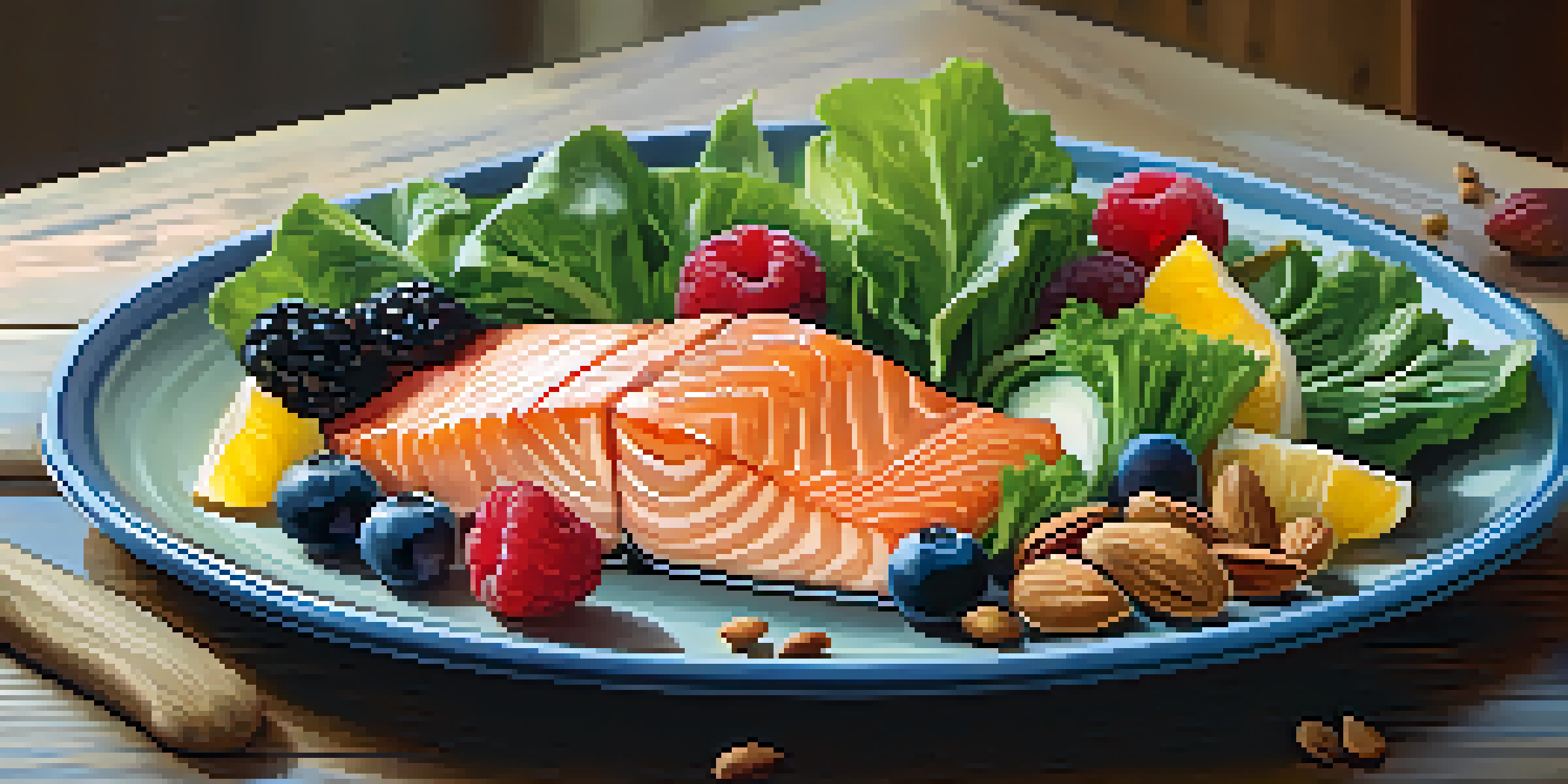The Connection Between Nutrition and Chronic Pain Relief

The Link Between Nutrition and Chronic Pain
Chronic pain can be a debilitating condition that affects your quality of life. Recent studies suggest that what we eat might influence our pain levels significantly. Nutrition isn't just about fueling our bodies; it can also impact inflammation, which is often a root cause of chronic pain.
How Inflammation Affects Pain Levels
Inflammation is like a fire in your body, and chronic pain can often feel like the smoke that lingers long after the flames have died down. Certain foods, particularly processed and high-sugar items, can stoke that fire, leading to increased discomfort. Conversely, anti-inflammatory foods such as fruits, vegetables, and omega-3 fatty acids can help put that fire out.
Nutrition Affects Chronic Pain
What you eat can significantly influence inflammation and pain levels in your body.
Key Nutrients for Pain Relief
Certain nutrients play a pivotal role in managing pain. For instance, magnesium can help relax muscles and reduce discomfort, while vitamin D is essential for bone health and can influence pain perception. Incorporating foods rich in these nutrients can help combat chronic pain effectively.
The Role of Antioxidants in Pain Management
Antioxidants are like little warriors that fight off harmful free radicals in our bodies, which can contribute to pain and inflammation. Foods rich in antioxidants, such as berries, nuts, and green leafy vegetables, can help protect your body from oxidative stress. By including these foods in your diet, you may find a reduction in pain levels.
Hydration is Key for Pain Relief
Staying well-hydrated can help reduce muscle cramps and lower pain sensitivity.
Hydration: A Simple Yet Powerful Tool
Staying hydrated is often overlooked in pain management strategies, but it’s essential. Dehydration can lead to muscle cramps and increased pain sensitivity. Drinking plenty of water and incorporating hydrating foods, like cucumbers and oranges, can help keep your body functioning optimally.
The Impact of Processed Foods on Pain
Processed foods can be tempting, but they often contain unhealthy fats, sugars, and additives that can exacerbate pain. These ingredients can trigger inflammation and lead to a cycle of discomfort. Opting for whole, unprocessed foods can break this cycle and promote overall well-being.
Whole Foods Combat Pain
Choosing whole, unprocessed foods can help break the cycle of inflammation and discomfort.
Creating a Balanced Pain-Relief Diet
Building a diet that supports pain relief doesn’t have to be complicated. Aim for a colorful plate filled with whole foods, lean proteins, and healthy fats. This balanced approach can help ensure you're getting the nutrients necessary to fight inflammation and manage pain effectively.
Consulting with Professionals for Personalized Advice
While general recommendations can help, it's vital to consult with healthcare professionals for personalized dietary advice. A registered dietitian can create a tailored plan that considers your specific needs and pain conditions. This individualized approach can lead to more effective pain management and improve your quality of life.